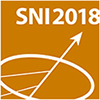A multi-particle coincidence spectrometer for electrons and ions (Reaction-Microscope, REMI) has been installed at the XUV free-electron laser FLASH2 in Hamburg as a permanent endstation for measurements with dilute atomic and molecular targets. The station is equipped with a high-throughput (> 70%) split-delay and focusing optics for the FEL beam in front of the spectrometer that allows...
X-ray emission and x-ray Raman scattering spectroscopy are powerful methods to study in situ the local electronic and atomic structure of high and low Z elements, respectively, in bulk matter. A combination of these techniques for time-resolved experiments should deliver a deeper understanding of phenomena such as e.g. hydration shell dynamics or the correlation between spin and structural...
K. S. Schulze 2,3, B. Marx3, H. Bernhardt 2,3, B. Grabiger 2,3, A. Schmitt 2,3, R. Loetzsch3, H. Marschner3, R. Roehlsberger1, H. C. Wille1, R. Rüffer 1,4, A. Madsen6, C. Detlefs4, T. Roth6, J. Hallmann6, J. Evers5, K. Heeg5, J. Haber5, I. Uschmann 2,3, G. G. Paulus 2,3
1Deutsches Elektronen-Synchrotron DESY, Notkestrasse 85, 22607 Hamburg, Germany.
2Helmholtz-Institut Jena, Fröbelstieg 3,...
Liquid interfaces witness renewed interest from physics, chemistry, and biology to gain fundamental insight and to develop applications, including nanomaterial synthesis and food science. To extend investigations of structure and growth at liquid – vapour[1] and liquid – liquid interfaces[2] to ultrafast time scales, we recently installed an optical pump – X-ray probe facility at the Liquid...
In condensed matter, the complex interactions between the subsystems spin, charge and lattice are responsible for (almost) all properties of solids. These interactions can lead to the formation of new phases of matter and determine the predominant energy and momentum relaxation mechanism of optically excited carriers in solids.
In this regard, time-resolved (tr) pump-probe spectroscopy is an...
We present the new URSA-PQ (Ultraschnelle Roentgenspektroskopie zur Abfrage der Photoenergiekonversion in Quantensystemen) instrument for the FLASH free electron laser in Hamburg.
The instrument design is versatile and many different sources as well as detectors can be inserted, as the chamber adheres to CAMP instrument standard sizes. In its base version, a vacuum chamber with a magnetic...
With the implementation of the European x-ray free electron laser a unique tool for time-resolved studies of small molecules and clusters emerges. The targeted pulse durations and photon energies will enable investigations which, firstly, involve more tightly bound K-shell electrons, and, secondly, address typical timescales of molecular decay process in the low fs-regime. By means of...
We present the results of our time-resolved X-ray absorption fine structure spectroscopy (TR-XAS) measurements at PETRA III beamline P11 and our future plans for TR-XAS measurements at beamline P64. With time-resolved pump-probe measurements using a high intensity micrometer-sized X-ray beam on copper complexes with a specifically designed constraining or predistorted ligand geometry, also...
We present a time-resolved ultrafast x-ray diffraction experiment with 5-10 ps temporal resolution performed at ID09B beamline at ESRF. The synchrotron hard x-ray pulse with an original duration of 120 ps is shortened by an ultrafast photoacoustic Bragg switch. The short x-ray pulse is used to probe lattice dynamics in a double-layered thin film sample. We discuss in detail the quality and...
Coherent diffractive imaging (CDI) at X-ray free-electron lasers allows for resolving the structure [1] and light-induced dynamics [2] in individual nanostructures. We developed an experimental setup saving two consecutive images on spatially separated detectors, allowing to follow the evolution of the same individual, non-reproducible particle after irradiation with an intense FEL pulse. In...

